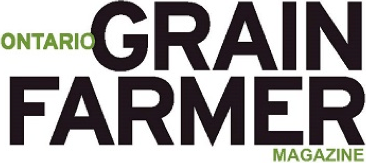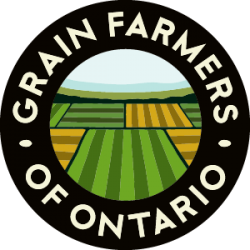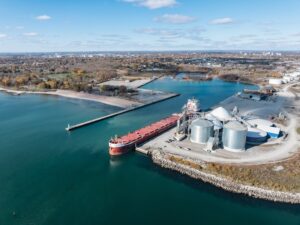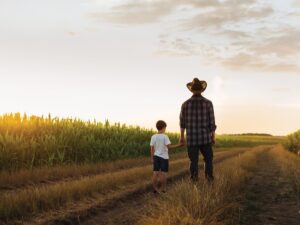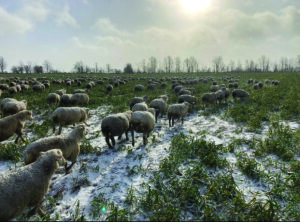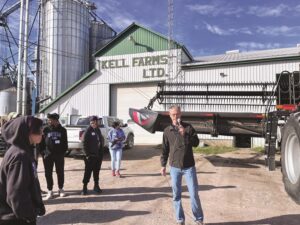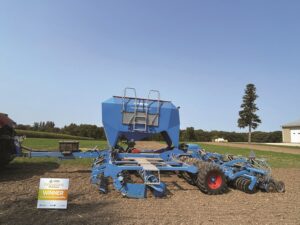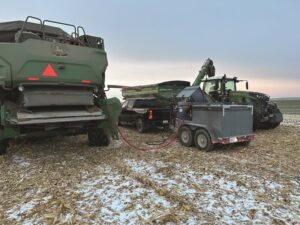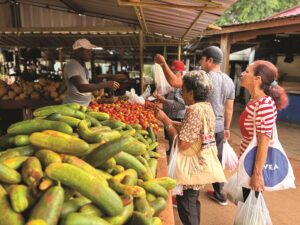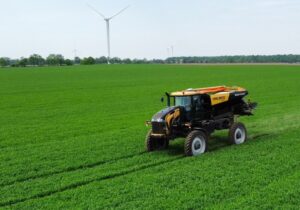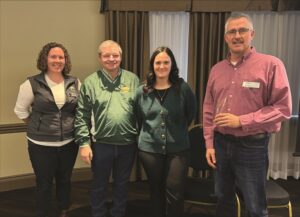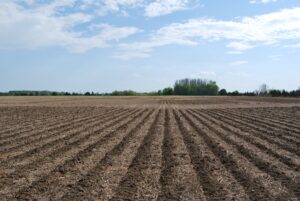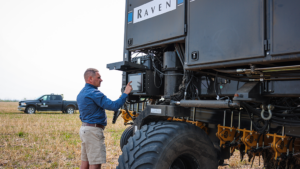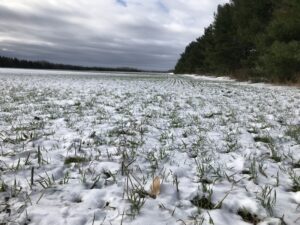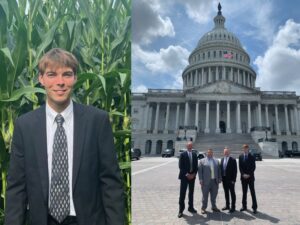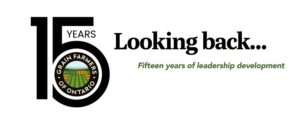Risks and rewards
Communicating about modern agriculture key to acceptance of innovation
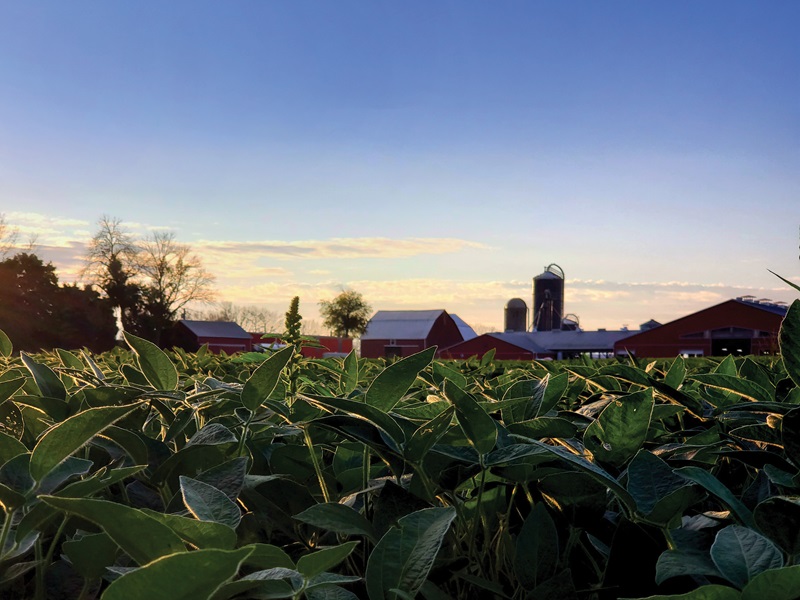
Few industries have seen change to the same extent as agriculture since the mid-1990s. Advances such as Bt corn and glyphosate- tolerant crops altered the standards for crop farmers, along with yield monitors, auto-steer, and variable-rate technology.
Over the past 10 to 15 years, robotic systems have revolutionized dairy farms, and similar mobilized systems are becoming increasingly common in field operations, from planting to small-scale weed management. However, the arrival of any innovation requires time for acclimatization, as well as consideration of the effects on commodity pricing, trade concerns, and the federal carbon tax, all of which can impact margins and profitability.
A constant among these changes is the acceptance of risk, including determining whether alterations in practices work efficiently to benefit producers, the overall impact on their operations or whether there’s a risk of consumer backlash. One thing is certain: risk has been part of agriculture, and not just since the mid-1990s, but long before.
Its acceptance is perhaps a testament to producers and the industry as a whole. In many circles, risk has been magnified by an environment of fear, stoked largely by mainstream media, the rise of social media and in many respects, government policies. Scientific facts are challenged and eroded by those with little or no scientific background, and agriculture is falling under that influence.
BEING THE EXAMPLE
As much as the industry may be under threat, Kevin MacLean believes those involved in food production need to take the reins and drive more of the efforts that help inform consumers. A big part of that effort is to accept risk as part of the job as a producer; it’s just part of their DNA.
“My neighbour and I joke that as farmers, we make more decisions by noon in a day than a lot of people make in a week,” says MacLean, a dairy producer and Grain Farmers of Ontario farmer- member, who operates Ripplebrook Farm near Napanee. “We take a certain sense of pride in that, and I think we enjoy the challenge of making those decisions, and with just about every decision we make, there’s some level of inherent risk.”
More than an advocate for “stepping up”, MacLean is an embodiment of that pledge, hosting multiple on-farm events that have attracted hundreds of consumers through the years. He’s hosted Farm and Food Care Ontario’s (FFCO) Breakfast on the Farm with the attitude that if farmers won’t speak for themselves, someone else will.
“We knew we were going to build this operation so we could showcase it to consumers—try to keep an open book on what we’re doing as an industry,” he adds. “I’ve made it a policy that I never say ‘No’ to a tour, no matter what.
That carries some risk, and MacLean acknowledges that fact: members of the public walking onto a farm is risky simply because some may have ulterior motives. He has even had his motives questioned by other farmers, who see communicating with the public as taking unnecessary risks. But where some see risk, he sees opportunity.
“I’ve taken the media training with Farm and Food Care, so I’ll hopefully answer the questions properly,” says MacLean. Part of the reasoning for the farm tours is to showcase what he does, but another key aspect is to show everything that’s part of his operation—the good and the not- so-good. He believes there’s much more to be gained with that risk than there is to be lost.
To help further mitigate his risks, MacLean advocates for mentoring, be it a family elder, a neighbour, or even his veterinarian. Now that he’s taken leadership of the operation from his late father, he’s open to being a mentor to others, stating that risk becomes less intimidating with more experience, with the examples set by his father and grandfather, and with more insight into the challenges of life on the farm.
GREATER UNDERSTANDING
Ask most producers, agronomists and industry stakeholders what defines success in today’s agri-food sector, and the answer is often “management”. Those who can manage a productive growing season, staff, and factors that influence their operations are likely to fare better year-over-year. In doing so, they’re likely better at managing risk, as well.
That management skill also includes a greater personal understanding of the dozens of tools of the profession. It’s one thing to employ a herbicide-tolerant cropping system, but that also requires understanding its limitations, including the need for rotating technologies and chemistries. That extends to equipment, fertility, and soil analysis.
Wayne Black has spent much of the past 15 years advising producers on the use of many different applications for on-farm management. He sees risk in the pursuit of higher production through newer advances without necessarily considering the impacts on performance and profitability. The technologies create opportunity: it’s not that there’s less risk or more or no risk, it’s just changed slightly.
“I’m going to reduce my risk by planting herbicide-tolerant crop technology, but if I use that same crop technology all the time, they’re an easy lightning rod to pick on,” says Black, national sales manager with A&L Canada Laboratories. “Even if you’re using new technology, there is still some risk involved—it just shifts a little bit.”
What concerns Black most, however, are the conflicting interests that exist between producers, retailers, and advisors. The needs of farmers and their farms are often out of sync with the goals and sales targets of companies selling inputs, seeds, and chemical products. Yet it isn’t the “what” of the tool producers may be using—whether it’s traited technology or a new soil analysis system. The risk comes when a producer agrees to use any tool without a sufficient understanding of how it performs.
“We need to have a better critical thinking process on how to reduce the risk on our farms,” he says.
THE RESEARCH
Critical thinking is one of four key aspects of dealing with risk, according to Owen Roberts, a Canadian farm journalist who has recently retired as an agriculture communications professor at the University of Illinois. Before his return to Canada, he was involved with developing a global certificate in agriculture and food communications, in collaboration with the International Federation of Agricultural Journalists (IFAJ). Although some might say risk assessment isn’t exactly the domain of journalists, he makes a compelling argument as to who might take the lead, provided they have the requisite training.
“There were four areas that came to the fore: critical thinking, leadership, multimedia reporting, and data journalism,” says Roberts. These came as part of a needs assessment from nearly 200 active journalists and communications professionals globally. “If you look at those four collectively or separately, they signify a new era in communications.”
Addressing critical thinking reflects thecurrent media environment in which we live. There has always been the desire for farm writers to take a lead, particularly in their areas of print, broadcast, or digital.
“For credibility purposes, the next generation of ag journalists and ag communicators is going to be extremely versatile,” adds Roberts. “The long view may not yield immediate results, but having people in place who know what kind of information is needed by consumers—and wanted—is vital, and it’s a real opportunity because I don’t believe there’s a unified approach.
As for communicating risk, Roberts acknowledges that it’s built on the benefits, yet the question remains whether people will accept those benefits. If something benefits farmers, they’ll certainly accept the risk. If the benefits are to society, let’s hear about those, too. And if possible, get farmers to use their reputations for trustworthiness to communicate risk to consumers. •
